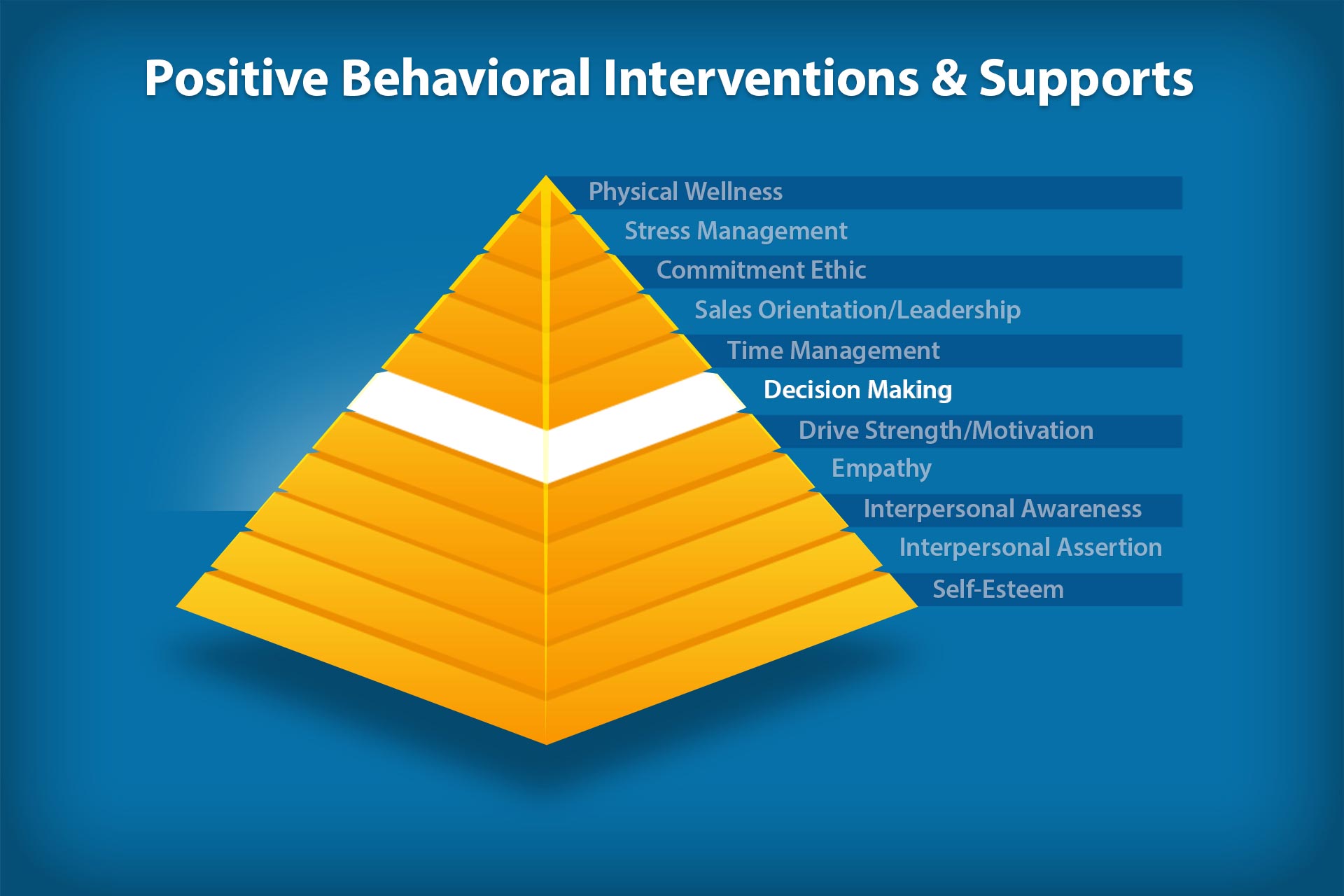
The Importance of Decision Making
The sixth step in our Success Profiler social/emotional pyramid is Decision Making. Decision making is using problem solving skills to discover a course of action that will most likely achieve the results you want. It is important to note the difference between decision making and problem solving. Decision making is the process that follows problem solving and is used because one wants something to happen. Problem solving, on the other hand, is used when a question needs to be answered.

Decision Making is a key social/emotional skill and is a scale in our Personal Skills Map. The reason Decision Making is so important in our social/emotional process is simple to understand. Every interaction with another person or thing requires good decision making skills. Whether one is trying to develop a friendship or decide which school to attend, it makes no difference. A good decision needs to be made in order to succeed.
How Decision Making Impacts PBIS
Positive Behavioral Interventions and Supports (PBIS) is a term used to describe the proactive approach to establishing the behavioral supports needed for students to achieve social, emotional and academic success. This definition suggests that problem solving, which leads to good decision making, is necessary for teachers to assist students in the PBIS framework. While we agree with that, we also wonder about the students. Don’t they need good decision making skills as well?

It is our belief that good decision making skills are equally important for both students and teachers. Good decision making on the part of the student can lead to academic success. Deciding to stay home and study on the night before a semester exam instead of going out with friends is just one example of good decision making skills that will lead to academic success.
The 8 Step Decision Making Process
There are many theories on how to make a good decision. All of these theories rely on gathering information about a problem, analyzing the data, and then making a decision. Check out our solid, eight-step approach to decision making:
- State the problem.
- Accept the responsibility to solve the problem.
- Collect data or information.
- Organize the data.
- Interpret the data.
- Find the real causes.
- Put a decision into action.
- Test the results.
But, just knowing about Decision Making isn’t going to translate into positive outcomes for your program. If you really want to see results, you need to apply this information in a way that will help the individuals you work with set goals, manage their emotions, and develop the workplace readiness skills they need to be successful in today’s information economy.
If you need help connecting PBIS to meaningful outcomes, we’ve developed social/emotional learning standards that you can download for FREE. These standards are research-based and organized by stage of life, so you can easily identify which skills to work on with your users or students.
If you’d like to download our soft skills standards you can find them here:
